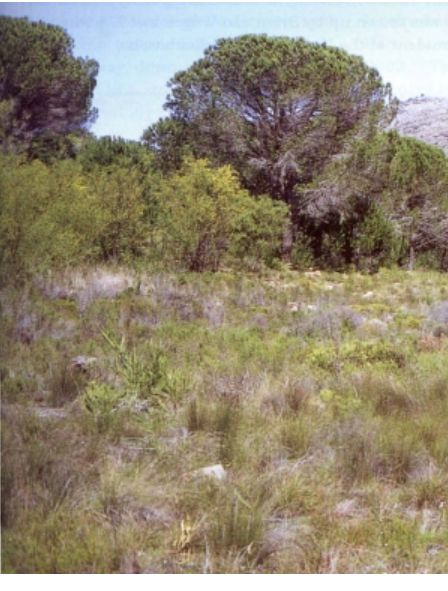
Gladiolus zimbabweensis, a species of perennial herb in the family Iridaceae has very rapidly disappeared from many of the places from which it was known in the Manica highlands of Zimbabwe. The species have a self-supporting growth form and are listed as vulnerable by IUCN. Gladiolus zimbabweensis have simple, broad leaves and capsule fruit which makes it more vulnerable to invasion by other plant species.
The species is under threat from ongoing habitat loss and disturbance due to forestry plantations, the subsequent spread of invasive pinus patula and livestock grazing. Natural regeneration of the Pinus patula in the Manica Highlands of Zimbabwe was investigated and found to represent a serious threat to the natural vegetation and endangered species like Gladiolus zimbabweensis with the invasion already advanced. Various aspects of the biology of the pine are related to its success as an exotic invader on the mountains.
Diminishing plant habitat is directly causing a decline in the population of Gladiolus zimbabweensis paving way to extinction. Manica highlands in Zimbabwe has been more vulnerable to climate change, extreme weather, and human health and the entire food chain is at risk as losing plant species such as Gladiolus zimbabweensis creates a dangerous domino effect as it drives a loss of animal diversity as well. Losing part of these species can have effects thus, protecting endangered plant species is crucial not only to protect the environment but also to ensure food security and human health.
Countries like US in 1973, passed one of the most effective policies to date to protect plants and animal species threatened with extinction which is the Endangered Species Act (ESA). The law, allows individuals and organisations to petition to have a species listed as endangered or threatened. After undergoing scientific review, classified endangered species are to be protected and to do so, long-term recovery plans for critical habitat areas are set up to prevent extinction. These plans cover a range of factors such as habitat, food availability, reproduction rate, and climate. With this in mind, African countries in general and Zimbabwe in particular are recommended to enact and enforce policies that regulates human actions that are likely to affect endangered species and also confer hefty jail terms to plant smugglers just like what is done with Rhino poachers
There are also other ways to help conserve endangered plant species and protect those at risk of extinction that can be done. Civil Society Organizations can organize awareness campaigns to educate community members about threatened species, conduct researches on what plants are at risk in the areas and the potential consequences people would face if they were to disappear. Community members should also commit to reducing their environmental footprint as much as possible, and being conscious that some actions can have detrimental effects.
